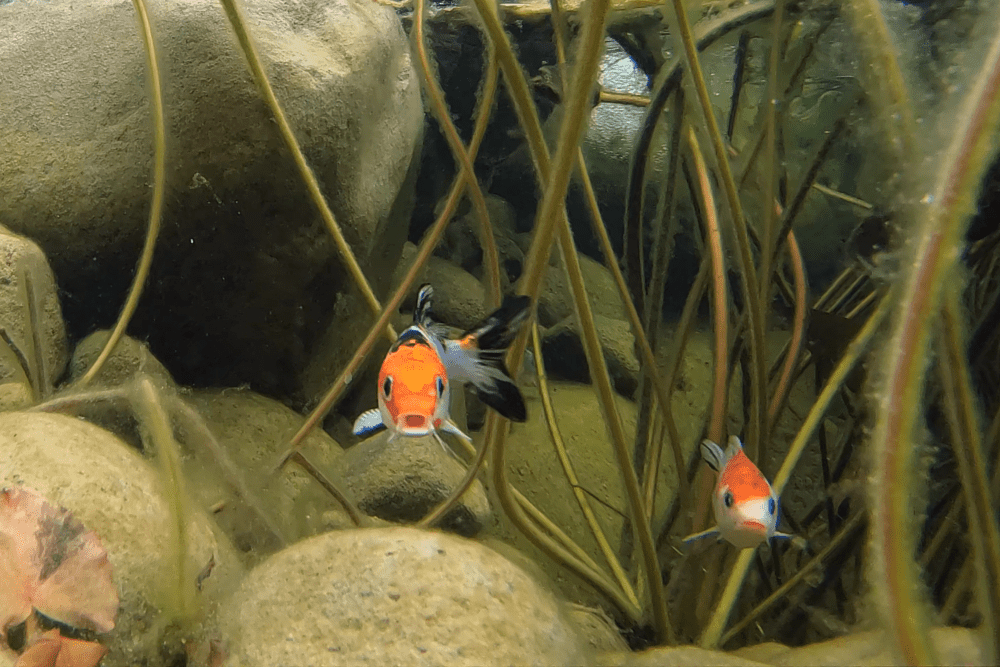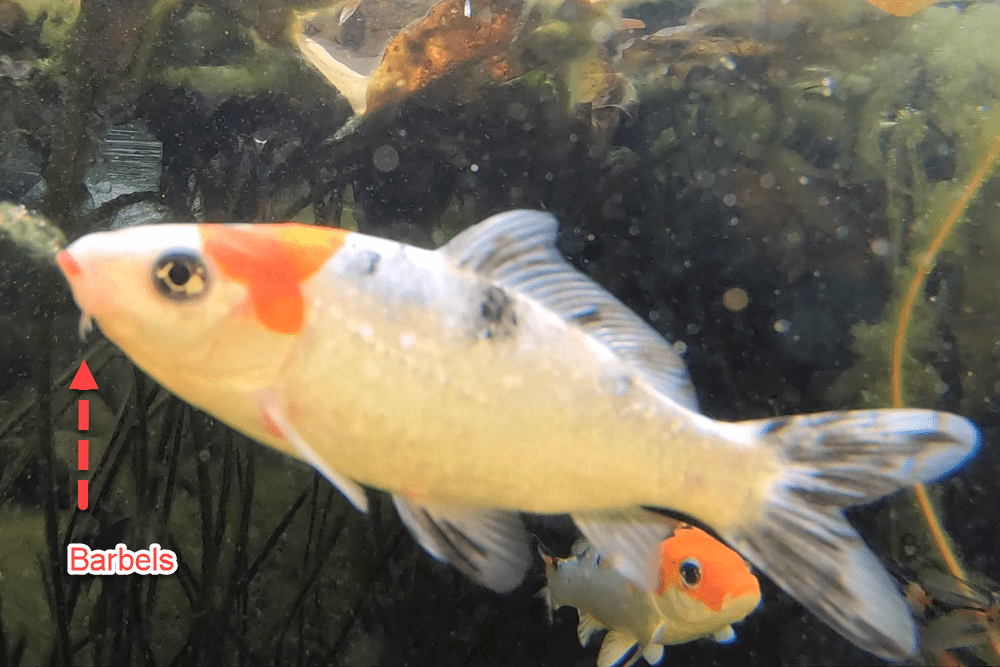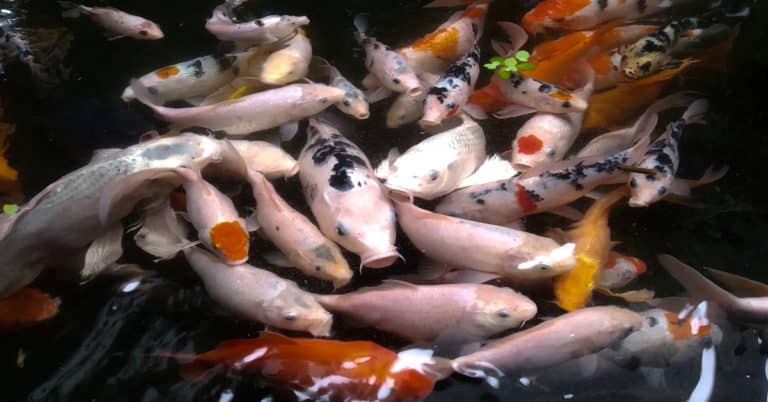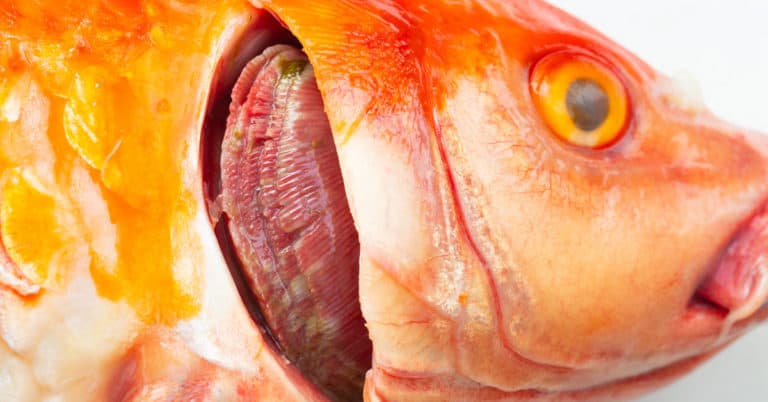You may have noticed that the koi in your outdoor pond have what looks to be whisker-like appendages protruding from the areas above and below the mouth of koi.
These whisker-like features are actually called "barbels". All members of the koi carp family have multiple barbel appendages emanating from their heads. Although an ornamental fish, koi are actually a member of the common carp family and have been produced after many iterations of selective breeding for their unique colorations and patterns. You'll also sometimes hear them called "feelers" as they can be effective at helping the fish "feel" their way around under poor light conditions.

The catfish is another freshwater fish that also sports barbels. In fact, catfish can actually have multiple sets of them along their head. Catfish were actually named after their barbels - which look like elongated cat whiskers - hence the name "catfish".
Barbels aren't limited to only freshwater fish. Tropical fish like Goatfish and Black Dragonfish are saltwater fish that also have these food-sensing appendages.
Yes, unlike common goldfish, all koi have two sets of barbels - an upper set and a lower set.
In a pond environment that contains both goldfish and Koi, you can look for these whisker-like appendages to figure out if you're looking at a koi or a goldfish. The barbel gives the koi a bit of an advantage over goldfish in navigating the koi pond. They also have a bit of a sensory advantage in their ability to process information carried by the pond water to their barbels.
The barbels are a multipurpose sensory powerhouse for the koi fish.
As humans, we have excellent eyesight and can easily make out objects from a distance. Koi aren't so lucky. They are operating in much more challenging conditions. Pond fish like koi often times have to deal with murky or dark conditions with limited visibility. The ponds they swim in are often murky or shaded with limited visibility. While Koi fish eyes are adequate enough, it is the whiskers give them the extra edge they need to get their bearings in low light conditions.
This is when barbels come in. Koi use them to sense good things like food - but also threats like predators - all from a distance.

The barbels actually contain taste buds koi use to find food. Their ability to "taste" food remotely allows them to find their favorite meal much more easily than they could by relying solely on their eyes and is used to guide them towards dinner.
Baby Fish (koi fry) have the beginnings of the barbel appendages right from the start. The cells responsible for development are present when the koi is in the embryonic stage. Koi fish whiskers start out very short and are difficult to see when looking at the young fish in your pond. As time goes on, they continue growing until they eventually become fully developed. It takes anywhere from 6 months to 2 years before a full complement of barbels has grown.
Koi barbels are relatively modest compared to the extreme lengths that you'll see on catfish. The upper set of barbels are usually much shorter than the lower set and can sometimes be difficult to see. The lower whiskers are usually visible once a koi has reached a few inches in length.

At least in some species of fish, barbels can actually increase in length when food is scarce. It is believed that the longer barbels will increase the chances of a fish finding food. This was a test conducted on tropical goatfish and presented in the Environmental Biology of Fishes.
Pond owners won't be able to determine the gender of their pond fish based on barbels. Fins and body shape are typically the criteria used to tell the difference between male koi and female koi.



